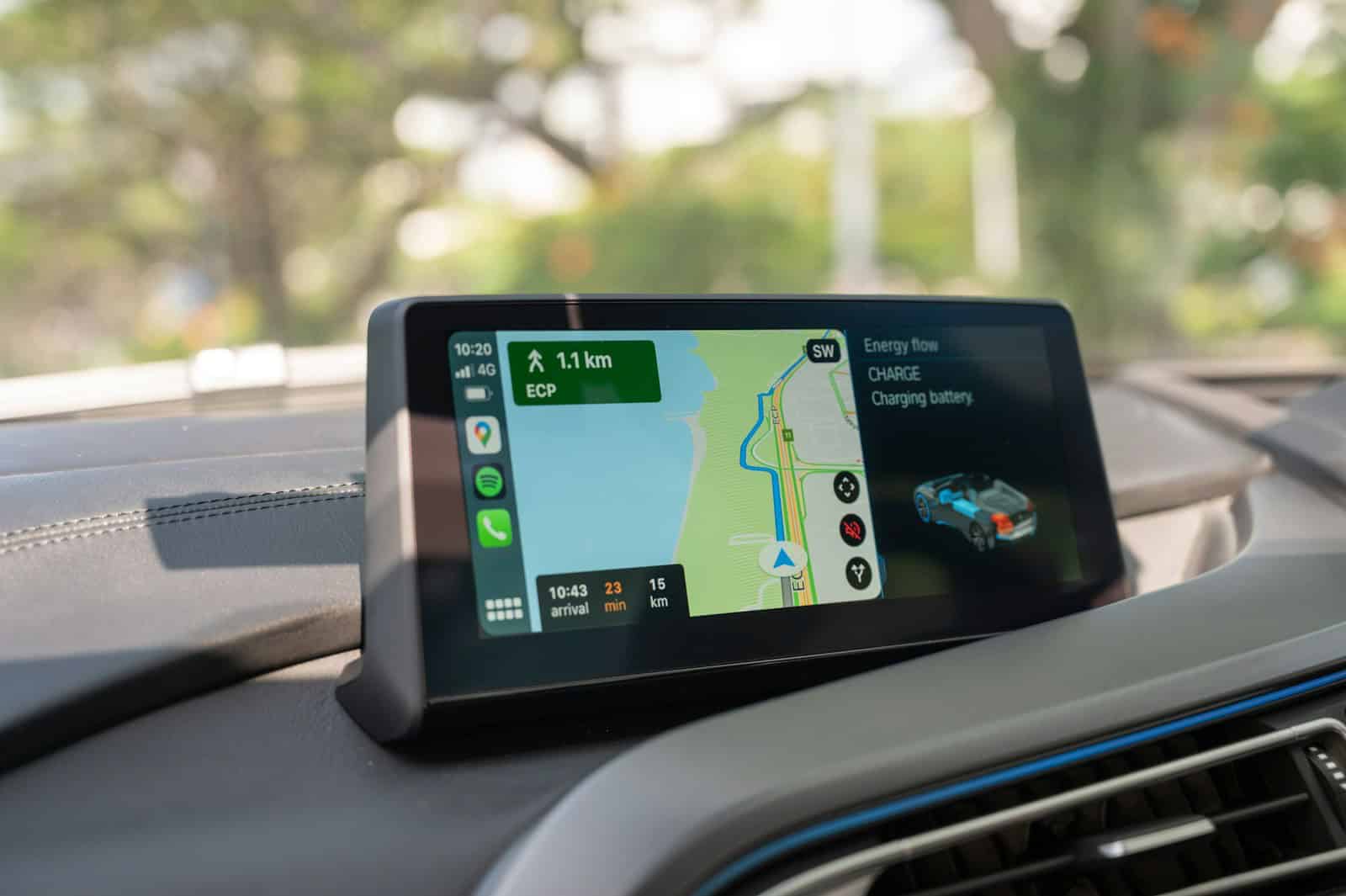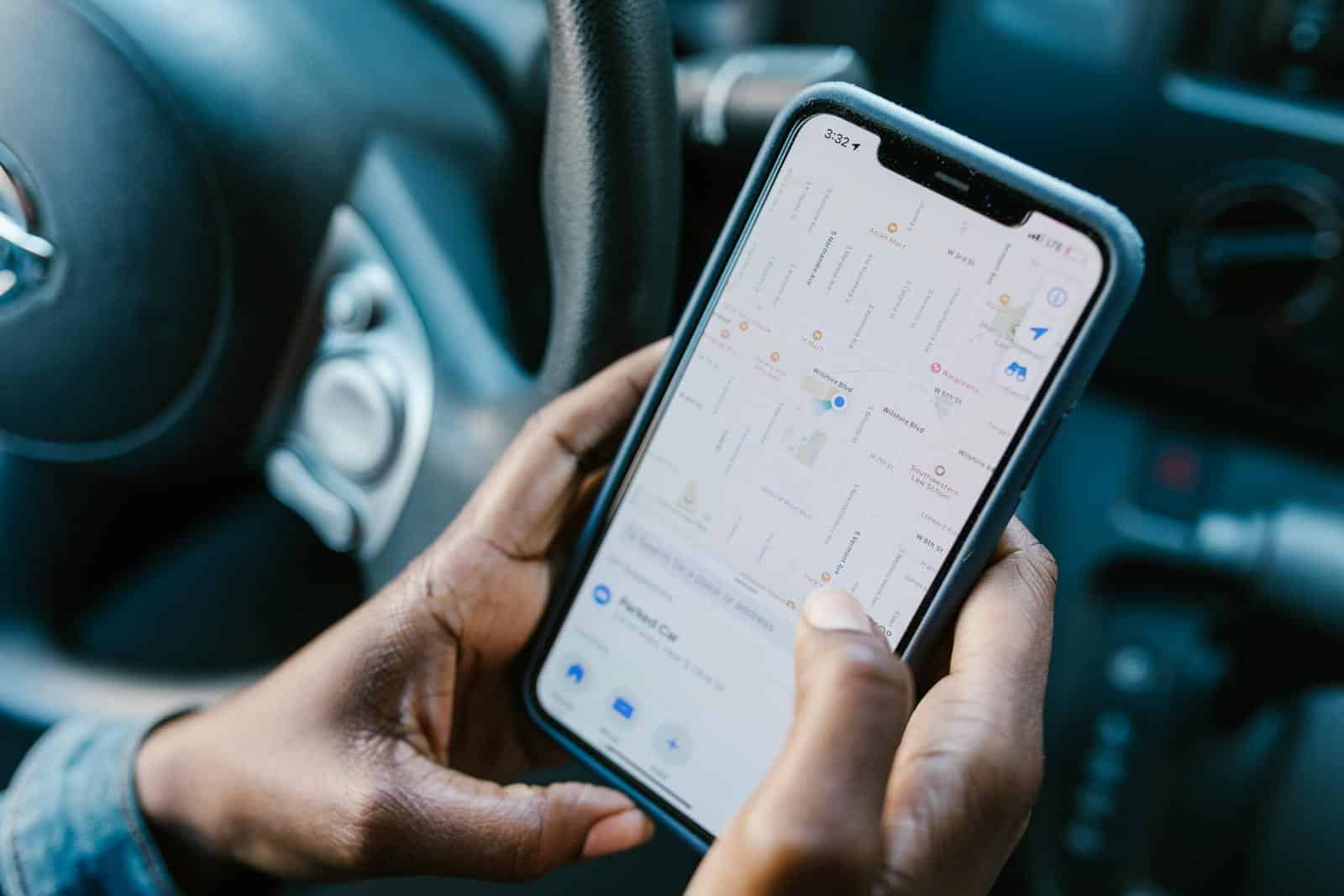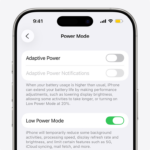Today’s GPS devices are more than just digital maps — they’re powerful, all-in-one navigation tools designed to enhance safety, save time, and improve your travel experience whether you’re on a mountain trail, an interstate highway, or even a remote waterway. In an era where smartphones dominate, dedicated GPS units continue to stand out by offering rugged durability, superior battery life, and precise signal reliability in places where phones often fail — like deep forests, mountainous terrain, or rural backroads with no cell coverage.
Thanks to advances in satellite tracking, processors, and display technology, GPS units in 2025 provide blazing-fast route recalculations, lane guidance with 3D landmarks, and integration with weather and traffic data in real-time.

Brands like Garmin have introduced models tailored for different users: from high-resolution handhelds built for backcountry explorers, to smart dashboard units with Alexa voice control and over-the-air map updates. Even wearable GPS devices have evolved, helping runners, cyclists, and hunters stay on track with built-in topographic maps and health monitoring features.
| Device | Best For | Screen Size | Battery Life | Key Features |
|---|---|---|---|---|
| Garmin GPSMAP 67 | Hiking, hunting, remote exploration | 2.6″ | Up to 180 hours | Topo maps, satellite imagery, rugged build |
| Garmin DriveSmart 55 | Car navigation | 5.5″ | Up to 1 hour (unplugged) | Voice control, traffic updates, Wi-Fi updates |
| Garmin eTrex 20x | Budget handheld for hikers | 2.2″ | Up to 25 hours (AA batteries) | Compact, durable, waypoint tracking |
| Garmin Drive 53 & Traffic | Everyday driving | 5″ | Moderate (vehicle-powered) | Real-time traffic, driver alerts, national parks directory |
| Apple Maps | iPhone users, casual travel | Phone-dependent | Phone battery life | 3D city views, privacy-focused, CarPlay integration |
| Google Maps | Versatile, international travel | Phone-dependent | Phone battery life | Offline maps, multi-modal transport, business discovery |
| Waze | Daily commuters, urban driving | Phone-dependent | Phone battery life | Crowdsourced alerts, real-time rerouting, fun voice options |
| Garmin Epix Gen 2 | Fitness + outdoor navigation | 1.3″ AMOLED (watch) | Up to 16 days (smartwatch mode) | Built-in topo maps, health tracking, GPS/GLONASS |
| Garmin Guidance 2.0 | Simplified car navigation | Varies by model | Varies | Intuitive UI, fast routing, easy POI search |
| Garmin DriveSmart 66 | Smart navigation + Alexa | 6″ | Up to 1 hour (unplugged) | Voice assist, TripAdvisor, Alexa integration, fuel prices |
To help you find the best GPS for your needs, we’ve broken down our top picks based on use case, screen size, battery life, and standout features. Whether you’re looking to ditch your phone for road navigation or need a reliable tracker for hiking and hunting, this guide covers it all.
1. Garmin GPSMAP 67
The Garmin GPSMAP 67 is a reliable handheld GPS device for outdoor use. It is durable and offers precise navigation. The battery lasts up to 180 hours on a single charge, which is great for long trips. It comes with TopoActive maps pre-installed, giving hikers essential terrain information without needing immediate downloads. The color display is easy to read, even in bright sunlight, and it works well in different lighting conditions—a key feature for outdoor adventures.
The GPSMAP 67 allows users to access satellite imagery, which helps with navigation in unfamiliar areas. Many outdoor enthusiasts consider it the best handheld GPS on the market. Its combination of features and reliability has earned it high praise from regular hikers. Garmin has a history of making quality handheld GPS devices since 2004. Each new model has improved reliability while maintaining necessary features.
The device is built to withstand harsh weather and rough handling and meets military standards for thermal, shock, and water resistance. It offers accurate navigation even in challenging places like dense forests or deep canyons. The GPSMAP 67 connects to multiple satellite networks for better signal coverage. It is lightweight and fits comfortably in your hand or pocket. The user-friendly interface has intuitive controls, making it easy for anyone new to GPS devices to learn.
For serious hikers and outdoor professionals, the GPSMAP 67 is reliable and functional. Its real-world performance meets or exceeds expectations.
2. Garmin DriveSmart 55
The Garmin DriveSmart 55 is a great GPS device for drivers who want clear directions without using their phones. It has a bright 5.5-inch edge-to-edge display that is easy to read in sunlight. This GPS navigator offers free lifetime traffic updates to help drivers avoid congestion and find faster routes during busy times.
Updating maps is simple with its built-in Wi-Fi. You don’t need to connect it to a computer for the latest maps and software updates. The device clearly speaks street names, allowing drivers to focus on the road instead of looking at the screen. It also provides helpful lane guidance at tricky intersections.
Voice control makes the DriveSmart 55 safer to use while driving. Drivers can ask for directions, change settings, or find nearby services without taking their hands off the wheel. The battery lasts up to one hour when unplugged, which is useful for moving the device between vehicles or carrying it short distances.
The DriveSmart 55 includes useful travel information such as points of interest, gas stations, restaurants, and hotels. It warns about sharp curves, speed changes, and school zones. Users on Reddit say the traffic information is quite accurate and that it is easy to update maps using Garmin Express software.
The device connects to smartphones via Bluetooth for hands-free calling and smart notifications on the GPS screen. Garmin added a “real directions” feature that uses landmarks for guidance. For example, instead of just saying “turn right,” it might say “turn right after the red building.”
The interface is easy to use, even for those who are not tech-savvy. Large buttons and clear menus make it quick to find functions. Weighing around 6.4 ounces, the DriveSmart 55 is lightweight and portable. The suction cup mount attaches firmly to windshields and is easy to adjust.
According to reviews, the device starts up quickly and calculates routes faster than older GPS models, resulting in less waiting when you’re ready to drive.
3. Garmin eTrex Series
The Garmin eTrex series offers some of the most compact and user-friendly GPS devices on the market. These small handheld units are perfect for hikers, campers, and outdoor enthusiasts who need reliable navigation in a lightweight package.
One of the biggest advantages of the eTrex lineup is its size. The units are small enough to fit in a pocket but rugged enough to withstand tough outdoor conditions. This makes them a great choice for backpackers or anyone looking to minimize gear weight.
The eTrex 20x stands out as a particularly good value option. It provides inexpensive, dedicated GPS functionality while still offering the essential features needed for outdoor navigation. The device comes preloaded with a basemap and can be upgraded with additional maps as needed.
Battery life is another strong point for the eTrex series. Most models can run for up to 25 hours on two AA batteries, which is ideal for weekend trips. Users can also bring spare batteries for longer expeditions without adding much weight.
A key difference between the eTrex and other Garmin lines is connectivity. The eTrex does not support Bluetooth and cannot connect to the Garmin Explore app. This means users cannot easily create or transfer routes and tracks from their phones to the device.
The screen on eTrex models is smaller than those found on premium GPS units. However, it remains readable in direct sunlight, which is essential for outdoor use. The units also feature simple button controls that work well with gloves.
For basic navigation needs, the eTrex series provides excellent value. These devices offer accurate GPS positioning, waypoint marking, and route tracking capabilities at a lower price point than advanced models.
Trail mapping is straightforward with the eTrex. Users can record their paths, mark important locations, and navigate back to starting points with ease. The devices also support geocaching, making them versatile tools for different outdoor activities.
The units are water-resistant, standing up to rain and brief submersion. This durability makes them reliable companions in changing weather conditions. Many outdoors people appreciate not having to worry about protecting their device from light moisture.
4. Garmin Drive 53 & Traffic
The Garmin Drive 53 & Traffic is a reliable GPS navigator designed for everyday driving. It features a bright 5-inch high-resolution glass touchscreen display that makes maps easy to see and read while driving.
This GPS device comes with helpful driver alerts that warn you about upcoming sharp curves, speed changes, and school zones. These warnings help improve driving safety and increase your awareness on the road.
One standout feature is the traffic capability. The Garmin Drive 53 with Traffic can alert you to traffic jams and suggest alternate routes to save you time. This can be especially useful during daily commutes or road trips.
The device has a modern, beautiful design with simple on-screen menus. You won’t need to spend much time figuring out how to use it, even if you’re not tech-savvy.
Garmin includes a national parks directory with this model. This makes it a good companion for road trips or outdoor adventures when you want to explore natural attractions.
The touchscreen interface works well and responds quickly to taps and swipes. Navigation instructions are clear and easy to follow, with plenty of advance notice for upcoming turns.
Battery life is decent, though most users keep it plugged into their vehicle’s power outlet during use. The suction cup mount that comes with the device holds it firmly to your windshield or dashboard.
For drivers who want a straightforward GPS without complicated features, the Garmin Drive 53 & Traffic hits the sweet spot. It does the basics very well without overwhelming you with options you’ll never use.
Maps are updated regularly, ensuring you have the most current road information. The device is also compatible with Garmin’s map update service for keeping your navigation system current.
5. Apple Maps
Apple Maps has become a strong option for iPhone users who need navigation help. It comes pre-installed on all Apple devices, making it easy to use right away.
Apple Maps offers 3D maps that look great and help users get a better feel for their surroundings. These detailed views are especially helpful in cities with tall buildings.
The app works well for everyday trips. Many users find it perfect for casual commutes under an hour. The interface is clean and simple to use, even for people who aren’t tech-savvy.
Turn-by-turn directions in Apple Maps are clear and easy to follow. The app gives timely alerts before turns and exits, helping drivers stay on the right path.
Privacy is a big plus with Apple Maps. Unlike some other GPS apps, it doesn’t track your movements or search history to sell ads. This makes it a good choice for people who care about keeping their data private.
The app has improved greatly since its launch. Early versions had problems with wrong directions and missing streets, but Apple has fixed most of these issues.
Apple Maps works seamlessly with other Apple services. Users can ask Siri for directions or find places they’ve marked in their contacts. This connection makes the whole system work better together.
For drivers with CarPlay, Apple Maps offers a great navigation experience right on their car’s display. The maps are clear and the directions are easy to see while driving.
One weakness is that Apple Maps works best within the Apple ecosystem. People who use both Android and iPhone devices might prefer a navigation app that works well on both platforms.
The app also offers useful features like showing speed limits and traffic conditions. These help drivers stay safe and avoid getting stuck in jams.
Recent updates have added cycling directions and electric vehicle routing. These new options show Apple’s commitment to improving the app for different types of travelers.
6. Google Maps
Google Maps is one of the most popular navigation apps available today. It offers detailed maps for over 220 countries and territories, making it a reliable choice for travelers worldwide.
The app provides real-time GPS navigation that helps drivers find the fastest routes to their destinations. Traffic updates appear in color-coded lines, showing where slowdowns might occur.
Users can explore local businesses, restaurants, and attractions directly within the app. This feature makes it easier to discover new places while traveling in unfamiliar areas.
Google Maps works well for different transportation methods. Whether you’re driving, walking, biking, or using public transit, the app offers specific directions for each mode.
The offline maps feature allows users to download areas before traveling. This proves useful when visiting places with poor internet connections or when trying to save mobile data.
Voice guidance gives clear, turn-by-turn directions so drivers can keep their eyes on the road. The app announces street names and exit numbers at appropriate times.
For public transit users, Google Maps shows schedules, stops, and even how crowded buses or trains might be. This helps commuters plan their trips more effectively.
The street view feature lets users see actual photos of locations before arriving. This can help identify landmarks and make unfamiliar destinations less confusing.
Google Maps integrates smoothly with other Google services. Users can save favorite places to their Google account and access them across different devices.
The app regularly updates its maps to reflect new roads, businesses, and changes in traffic patterns. This keeps the information current and reliable for everyday use.
For drivers, Google Maps provides navigation that works well for most situations, though some users prefer Waze (another Google-owned app) specifically for driving directions.
Google Maps is free to download and use on both Android and iOS devices. Its widespread popularity means it receives frequent updates and improvements.
7. Waze
Waze stands out as a popular navigation app with a focus on driving. Unlike some other GPS options, Waze specializes in providing the best driving experience with real-time updates from other drivers.
One key feature of Waze is its crowdsourced traffic information. Users can report accidents, police sightings, and road hazards that appear on the map for other drivers. This community approach helps everyone avoid traffic jams and road problems.
The app offers top-notch, crowdsourced road information that keeps drivers informed about what’s happening on their route. These updates happen in real-time, making each trip smoother and less stressful.
Waze excels at finding shortcuts that other navigation apps might miss. It constantly recalculates routes based on current traffic conditions, helping drivers save time on their journeys.
For those who drive often, Waze may be the best choice. According to reviews, Waze is the best option if driving is all you’re doing, beating out other popular options for car travel.
The app includes fun customization options too. Users can change the voice that gives directions, with many finding that Waze’s voice sounds smoother than other navigation apps. Some users enjoy swapping out the default voice for something more entertaining.
Safety features are another strong point for Waze. The app provides real-time safety alerts to help drivers navigate with confidence. These warnings about hazards ahead give drivers time to adjust their speed or change lanes.
Waze does have some limitations. The app focuses almost entirely on driving, so it lacks the walking, biking, and public transit options found in other navigation apps. This makes it less useful for non-driving situations.
Battery life can be another concern when using Waze. Because it constantly updates with real-time information, the app may use more battery power than some other GPS options.
Despite these small drawbacks, Waze remains a top choice for drivers who want the most current traffic information and the fastest routes to their destinations.
8. Epix Gen 2
The Garmin Epix Gen 2 stands out as a top GPS watch choice for outdoor enthusiasts and athletes. Its stunning AMOLED touchscreen display makes it easy to read in all conditions, setting it apart from other GPS watches.
Battery life is impressive on this model. Users can expect extended use between charges even with the bright display, making it perfect for long adventures without worrying about power.
The watch offers various GPS settings to match your needs. Many users find that switching from the automatic position to All GPS provides more accurate distance tracking. This helps when comparing results with other devices.
For activities with elevation changes, users can improve accuracy by enabling 3D Speed and 3D Distance features. These settings make a real difference when hiking or running on hilly terrain.
The built-in maps feature adds tremendous value for hikers and trail runners. Having detailed maps right on your wrist means less time checking your phone and more time enjoying the outdoors.
Build quality matches the premium price tag. The durability of the Epix Gen 2 means it can handle rough conditions while maintaining its performance and good looks.
Many users who upgrade to this model from other GPS watches note the jump in quality. The touch response, screen clarity, and overall user experience feel more refined than previous generations.
Health tracking features go beyond basic GPS functions. Sleep tracking, heart rate monitoring, and fitness metrics help users understand their bodies better during and after activities.
The watch connects smoothly with smartphones to deliver notifications and sync data. This integration makes it useful for daily wear, not just during workouts or adventures.
While the price sits at the higher end of the GPS watch market, most owners feel the quality justifies the investment. The combination of accurate GPS, beautiful display, and robust features creates a compelling package.
9. Garmin Guidance 2.0
Garmin Guidance 2.0 stands out as a major upgrade in GPS navigation technology. This system offers users a simple, clean interface with just two main options: “Where To?” and “View Map,” making it very easy to use right from the start.
The interface is designed with simplicity in mind. Users can quickly look up addresses and find routes without complex menus or confusing options. This makes Garmin devices with Guidance 2.0 accessible even for those who aren’t tech-savvy.
One of the key benefits of Guidance 2.0 is faster routing and map displays. The system calculates routes more quickly than older versions, saving valuable time when you’re trying to get somewhere.
The technology also provides more intuitive destination searches, letting users find what they need with less effort. This means spending less time typing and more time driving.
A helpful feature allows users to see and select businesses directly on the map. Instead of searching by name, you can simply tap on a location you see on the screen to get information about it.
For boaters, Garmin offers Auto Guidance 2.0, which lets users enter their desired destination and have the system create a route automatically. This saves time when planning trips on the water.
Many customers report that GPS units with Guidance 2.0 are easy to use and perform well. They particularly like the user-friendly interface and accurate routing capabilities.
The technology appears in various Garmin models, including some that were considered top-line but are now available at lower prices. This makes premium GPS features more accessible to average consumers.
For many users, the straightforward nature of Guidance 2.0 is its biggest selling point. The system focuses on getting users from point A to point B without unnecessary complications or distractions.
10. Garmin DriveSmart 66
The Garmin DriveSmart 66 is a standout car GPS navigator with a 6-inch high-resolution display. This screen size hits the sweet spot. It is not too big to block your view when mounted on the dash, yet large enough to see clearly while driving.
Map updates for North America come included with this device. You won’t need to worry about outdated routes or missing new roads as you travel.
The DriveSmart 66 connects to your smartphone through Bluetooth technology. This feature enables hands-free calling, letting you stay in touch without taking your hands off the wheel.
Garmin voice assist makes finding destinations simple. Just tell the device where you want to go, and it guides you there with clear directions.
Traffic and fuel price updates are available through the mobile app. This helps drivers avoid congestion and find the best gas prices along their route.
Many users find the size perfect for everyday use. The screen is bright and crisp, making it easy to read even in sunny conditions.
The device comes with preloaded maps of national parks. This feature is especially helpful for road trips and outdoor adventures.
Amazon Alexa is built into the DriveSmart 66. This integration lets you check weather, control smart home devices, or play music using voice commands while driving.
WiFi connectivity allows for easy map and software updates without needing a computer. Just connect to your home network to download the latest improvements.
TripAdvisor ratings and reviews are accessible right on the device. This helps travelers find well-rated restaurants, hotels, and attractions nearby.
The Garmin DriveSmart 66 simplifies navigation for both daily commutes and long road trips. Its combination of clear visuals, voice features, and connectivity makes it a strong choice for drivers seeking reliable guidance.
Functionality of Modern GPS Devices
Modern GPS devices offer advanced features that make navigation easier and more reliable than ever before. Today’s units combine accurate positioning with user-friendly interfaces and smart connectivity options to help users find their way in diverse environments.
User Interface and Ease of Use
Most current GPS devices feature intuitive interfaces that don’t require technical expertise. Touch screens have become standard on premium models, allowing users to pinch, zoom, and swipe just like on smartphones. Button-based interfaces remain popular on rugged outdoor models, as they work reliably with gloves or in wet conditions.
Screen technology has improved dramatically, with many units offering sunlight-readable displays that remain visible in bright outdoor conditions. This is a key advantage over typical smartphones, which often wash out in direct sunlight.
Menu systems on modern GPS units are typically organized in a logical fashion. Most provide quick access to essential functions like marking waypoints, tracking routes, and finding points of interest. The best models allow users to customize their dashboards to show the information that matters most to them.
Navigation performance has reached impressive levels of accuracy, with most devices pinpointing locations within 10 meters or less.
Integration with Smartphones
Modern GPS devices now work hand-in-hand with smartphones through dedicated apps. This connection lets users plan routes on their phones’ larger screens, then send them to their GPS devices for use in the field.
Many GPS units can display smartphone notifications, texts, and calls, reducing the need to pull out a phone during activities. This feature proves especially valuable during hiking, cycling, or driving.
Cloud synchronization allows for seamless data sharing between devices. Routes, waypoints, and tracks can be saved online and accessed from multiple devices or shared with friends and family members.
Despite this connectivity, dedicated GPS units maintain important advantages over smartphone apps. They offer superior durability and much longer battery life – often lasting 20+ hours on a single charge compared to a few hours for a phone running GPS apps.
Many models can load specialized maps for activities like hiking, boating, or off-roading that smartphone apps may not support. They also work reliably in areas with no cell service, a crucial benefit for backcountry adventures.
Benefits of Using GPS
GPS technology offers key advantages that make travel safer and more efficient. Modern GPS systems provide precise directions and help users avoid danger.
Accurate Navigation and Mapping
GPS devices give users extremely precise positioning information anywhere in the world. This accuracy helps drivers find the fastest routes to their destinations without getting lost.
GPS maps update regularly to show new roads and changed traffic patterns. Many systems offer real-time traffic updates that help users avoid congestion and construction zones.
The technology works even in areas with no cell service, making it reliable for hiking and off-road adventures. Some GPS units can cache map data for use in remote locations.
GPS also helps businesses track shipments and manage delivery routes more efficiently. This leads to increased productivity for companies that rely on transportation.
Enhanced Safety Features
GPS technology significantly improves safety for travelers and vehicle operators. Modern systems can alert drivers to upcoming hazards like sharp turns or school zones.
For parents, GPS tracking offers peace of mind by allowing them to monitor their teen’s driving behavior. They can check speed, location, and route information at any time.
Fleet managers use GPS to promote safer driving habits among employees. The systems track speed, harsh braking, and other metrics that indicate risky driving.
In emergencies, GPS helps rescue teams locate people quickly. This feature is especially valuable for hikers, boaters, and travelers in unfamiliar areas.
GPS also aids in theft recovery by showing the exact location of stolen vehicles. Police can track and recover these items faster with GPS data.
Frequently Asked Questions
People have many questions about choosing the right GPS for their needs. The best GPS devices offer different features for specific uses like driving, hiking, and travel.
What features should I consider when selecting a GPS app for my smartphone?
When choosing a GPS app, look for offline map capabilities so you can navigate without cell service. Battery efficiency is crucial since GPS apps drain phone power quickly.
User interface matters too. The app should be easy to read while driving or walking. Look for clear voice directions and real-time traffic updates.
Apps with pedestrian modes and public transit options are helpful in cities. Some GPS apps offer free updates, while others require subscription fees for premium features.
How do Garmin GPS devices compare to other brands for car navigation?
Garmin devices like the DriveSmart 55 typically offer more detailed maps and better durability than most competitors. Their user interface is known for being driver-friendly with clear lane guidance.
Garmin’s traffic update systems are highly accurate compared to other brands. Their voice command features also tend to understand natural speech better.
Unlike phone-based options, Garmin devices don’t need cell service to function. Most models include lifetime map updates, making them cost-effective long-term investments.
What are the top-rated GPS systems for hiking and outdoor adventure?
The Garmin eTrex series consistently ranks highest for hiking due to its durability and long battery life. The Garmin GPSMAP 67 offers excellent reception even under dense tree cover.
Outdoor GPS units should be waterproof and shock-resistant for trail use. Look for models with barometric altimeters and electronic compasses for accurate elevation readings.
The best hiking GPS devices can mark waypoints and create custom routes. Battery life is critical – top models offer 20+ hours of continuous use on standard batteries.
Which GPS navigation options are recommended for international travel?
For international trips, consider GPS devices with worldwide maps or inexpensive map downloads. Some Garmin models include basic international maps with the option to add detailed regional maps.
Phone apps like Google Maps and Apple Maps offer excellent international coverage, but check if they work offline in your destination. Download maps before traveling to avoid data charges.
Portable GPS units with language options help navigate in foreign countries. Look for devices that display street names in both local and English alphabets.
Can you suggest a reliable GPS device for hunting purposes?
For hunting, the Garmin GPSMAP 67 excels with its exceptional battery life and rugged design. Look for units with detailed topographic maps showing terrain features.
Key hunting features include dog tracking capabilities and marked property boundaries. Some models connect to satellite messengers for emergency communication in remote areas.
Weather prediction tools and sunrise/sunset calculators help plan hunting trips effectively. Choose units with larger buttons that work with gloves in cold weather.
What are the advantages of using a dedicated GPS device over a GPS smartphone app in cars?
Dedicated GPS units like the Garmin Drive 53 & Traffic provide reliable navigation without draining your phone battery. They typically have brighter screens that remain visible in direct sunlight.
Car GPS devices are designed specifically for driving. They have easy-to-read displays and mounting systems. Unlike phones, they won’t get interrupted by calls or notifications while navigating.
Many dedicated units include safety features like lane departure warnings and speed limit alerts. The GPS technology in specialized devices often maintains signal in tunnels and urban canyons where phones might lose connection.







